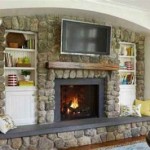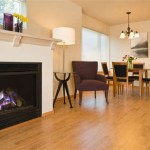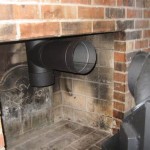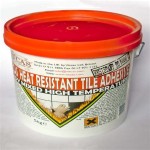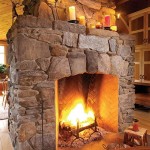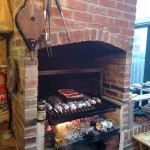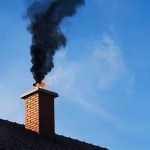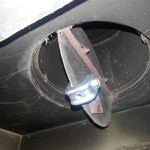Victorian Gas Fireplace Stove: A Timeless Blend of Elegance and Efficiency
The Victorian era, spanning from 1837 to 1901, was a period of significant technological advancement and artistic refinement. This era also witnessed a shift in home heating, with gas fireplaces and stoves becoming increasingly popular, particularly among the middle and upper classes. The Victorian gas fireplace stove represents a unique convergence of functionality and aesthetic appeal, offering warmth while simultaneously serving as a decorative focal point within the home. Understanding the features, benefits, and historical context of these stoves provides valuable insight into their enduring appeal.
### The Rise of Gas Heating in Victorian HomesPrior to the widespread adoption of gas, homes were primarily heated by coal or wood-burning fireplaces. However, these fuels presented several drawbacks, including the need for significant storage space, the laborious process of hauling and feeding the fire, and the constant emission of smoke and soot. Gas, on the other hand, offered a cleaner, more efficient, and controllable heating solution. The development of gasworks and piped gas infrastructure facilitated the widespread accessibility of this new fuel source. As gas lighting became common, the transition to gas heating seemed a natural progression.
Victorian gas fireplace stoves capitalized on this growing trend. They were designed to mimic the appearance of traditional coal fires, but offered the convenience of instant ignition and adjustable heat output. This newfound control over temperature allowed for greater comfort and reduced the risk of overheating or fuel wastage. The cleanliness of gas further enhanced its appeal, as it minimized the need for constant cleaning and maintenance associated with coal fires.
The installation process, while requiring skilled professionals to connect the stove to the gas line, was often less disruptive than constructing or modifying a traditional fireplace. Gas stoves also occupied a smaller footprint, making them suitable for smaller rooms or homes lacking existing chimneys. The relative safety of gas, compared to the potential hazards of open coal fires, further cemented its position as a desirable heating option.
### Key Features and Design ElementsVictorian gas fireplace stoves are characterized by their intricate designs and attention to detail. These stoves were not merely functional appliances; they were carefully crafted pieces of furniture designed to enhance the overall aesthetic of the room. Cast iron was the primary material used in their construction, prized for its durability, heat retention properties, and ability to be molded into elaborate shapes.
The exterior of a typical Victorian gas stove often features ornate scrollwork, decorative moldings, and intricate patterns. These designs drew inspiration from various artistic movements of the era, including Gothic Revival, Renaissance Revival, and Art Nouveau. Motifs such as floral patterns, geometric designs, and classical figures were commonly incorporated into the stove's ornamentation. Many stoves were further embellished with polished nickel or brass accents, adding a touch of elegance and sophistication.
The firebox, where the gas flames were displayed, was often designed to resemble a traditional coal fire. Faux coals, made of ceramic or asbestos (in early models, now considered hazardous and removed), were arranged to create a realistic-looking fire. A mica window or a decorative grate would often enclose the firebox, providing a clear view of the flames while preventing accidental contact. Some stoves were equipped with adjustable vents and dampers, allowing for precise control over airflow and heat output.
Beyond their aesthetic appeal, Victorian gas stoves were also engineered for optimal performance. The cast iron construction ensured efficient heat distribution, radiating warmth evenly throughout the room. The internal design of the stove maximized the combustion efficiency of the gas, minimizing fuel consumption and maximizing heat output. Many stoves featured a flue connection, venting combustion gases safely outside the home. The presence of a pilot light, which provided a continuous flame for instant ignition, was another common feature. While pilot lights offered convenience, they also consumed a small amount of gas continuously.
The size and style of Victorian gas fireplace stoves varied considerably, depending on the intended use and the homeowner's preferences. Smaller stoves were suitable for bedrooms or smaller living rooms, while larger models were designed to heat larger spaces. Some stoves were freestanding, while others were designed to be recessed into existing fireplace openings. The overall design of the stove was often tailored to complement the architectural style of the home.
### Benefits and Considerations for Modern UseWhile Victorian gas fireplace stoves offer a unique blend of historical charm and functional heating, their suitability for modern use warrants careful consideration. The historical authenticity of these stoves is a major draw for enthusiasts seeking to recreate the ambiance of the Victorian era. The intricate designs and craftsmanship of these stoves can add a touch of elegance and character to any home, serving as a conversation piece and a testament to a bygone era.
From a practical standpoint, Victorian gas stoves can provide efficient and reliable heating. The radiant heat emitted by the cast iron construction offers a comfortable and even warmth, similar to that of a traditional coal fire. The adjustable heat output allows for precise temperature control, ensuring optimal comfort. In many cases, these stoves can be retrofitted with modern gas burners and safety features, enhancing their efficiency and reliability.
However, several factors must be considered before installing a Victorian gas fireplace stove in a modern home. Firstly, the safety of the stove must be thoroughly assessed. Older stoves may lack modern safety features such as oxygen depletion sensors (ODS), which automatically shut off the gas supply if carbon monoxide levels become dangerously high. It is essential to ensure that the stove is properly vented and that the gas line is installed by a qualified professional.
Secondly, the efficiency of older gas stoves may be lower than that of modern models. While the radiant heat output can be significant, the overall fuel consumption may be higher. Retrofitting the stove with a modern, high-efficiency gas burner can improve its performance, but this may also alter its original appearance. The availability of replacement parts for older stoves can be limited, making maintenance and repairs more challenging. Sourcing original or reproduction parts may require specialized knowledge and research.
Thirdly, the installation of a Victorian gas stove must comply with local building codes and regulations. This may require obtaining permits and inspections, ensuring that the stove meets current safety standards. The venting system must be properly designed and installed to prevent the buildup of carbon monoxide and other harmful gases. The proximity of the stove to combustible materials must also be considered to mitigate the risk of fire.
Finally, the cost of acquiring and restoring a Victorian gas fireplace stove can be significant. Antique stoves in good condition can command high prices, and the cost of restoration, including cleaning, repairs, and retrofitting, can further add to the expense. However, for those seeking a unique and historically significant heating solution, the investment can be worthwhile. The enduring appeal of Victorian gas fireplace stoves lies in their ability to combine functional heating with timeless elegance, offering a glimpse into the domestic life of a fascinating era.

Belmont Small Gas Insert

Windsor Small Victorian Style Gas Insert

Victorian Fireplace Gas After Living Room Minneapolis By Woodland Stoves And Fireplaces Houzz Ie

Enviro S Gas Q1 Insert

Gas Fires For Victorian Fireplaces Fireplace Wood Burning Inserts Design

Belmont Small Gas Insert

Enviro Q1 Portrait Style Fireplace Friendly Fires

Gas And Electric Fire Options Stovax Gazco

Cast Tec Victorian Corbel Limestone Fireplace Flames Co

Gas Inserts Victorian Fireplace

